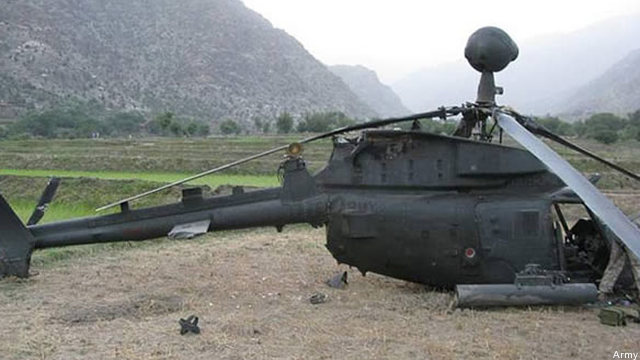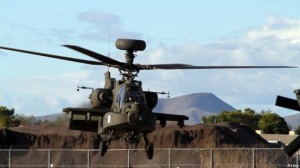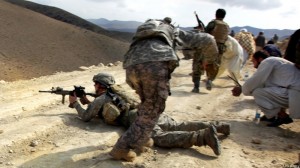Army Aviation Budget Plunges Earthward
Posted on

Aviation, always the Army’s largest modernization account, goes into a nosedive in the fiscal 2017 budget, plunging from $5.9 billion to $3.6 billion. The $2.3 billion cut more than makes up for a $1.3 billion cut to total Army spending that helps fund readiness, operations and maintenance. But with aviation accounting for 25 percent of the Army’s procurement pie, it’s no surprise to see the service’s biggest budget cut coming there.
[Click here for our complete coverage of the 2017 budget]
“It’s like, why do you rob banks? Because that’s where the money is,” said one former Army aviation officer. “Why do you cut aviation? Because that’s where the money is.”
Or as the Army’s budget director, Maj. Gen. Thomas Horlander, told a Pentagon briefing: “That’s a big portfolio and we had to make up some ground in terms of total reductions. We tried to strike that balance as best as we could.”
The administration is requesting almost the same budget for the Army overall as Congress approved for fiscal 2016: $148 billion in all, a $1.1 billion increase over fiscal 2016. That’s the net result of a $2 billion increase in war-related Overseas Contingency Operations (OCO) funding, which would rise to $23 billion in fiscal 2017, and a $1.4 billion reduction in the base Army budget.

Army AH-64E Apache Guardian
A reduction in Boeing CH-47F Chinook orders from 39 to 22 and a cut in Sikorsky UH-60M Black Hawk purchases from 107 in FY 2016 to a requested 36 in FY 2017 were made easier because each program is in the last year of a five-year contract. The reduction in Boeing AH-64D Apache attack helicopters to be remanufactured into AH-64Es from 64 to 52 represents a cut of five from the 57 the Army said last year it would buy in FY 2017.
Despite the cuts, the Army’s budget documents said the 2017 request “prioritizes modernization of Apache, Black Hawk and Chinook helicopter fleets.”.
Mike Hirschberg, executive director of the American Helicopter Society International, denounced the helicopter cuts. “The world is getting more and more dangerous,” Hirschberg said. “If the military is called upon to intervene in one of these hotspots, we know that Army aviation is again going to play a key role. This draconian cut in rotorcraft procurement is a dangerous gamble with our national security.”
While the budget slashes aviation spending by 40 percent, the Army would slightly increase other procurement accounts, spending a few hundred thousand dollars more to modernize its M1 Abrams tanks and Stryker armored vehicles and to buy ammunition. Overall, Army procurement would decline by $1.4 billion, from $16.4 billion in 2016 to $15.1 billion in 2017. The Army’s research and development budget would hold steady, slipping only a bit from $7.6 billion to $7.5 billion, consistent with Office of Secretary of Defense efforts to maintain America’s technological lead over our competitors.

Army Airborne soldiers fighting insurgents in Afghanistan.
But the Army’s largest single bill is always manpower. The 2017 budget continues to shrink the service’s end strength, reducing the total force from 1,015,000 to 990,000, including a cut of 15,000 regular Army personnel, for a total active duty force of 460,000. That’s in keeping with established plans to go down to 980,000 soldiers, 450,000 of them active duty regulars — though many officers and observers fear the decline will not stop there.
The new budget focuses on readiness and boosts spending on regular Army operations and maintenance, adding $1.2 billion to increase that account to $35.4 billion compared to FY 2016. Those funds and OCO money are needed for missions that include supporting Afghan forces against the Taliban and Al Qaeda in Afghanistan, training and assisting Iraqi forces against Daesh (the so-called Islamic State) in Iraq, and reassuring allies by deterring Russian aggression in Europe and North Korean aggression in Asia.
“Readiness is our Number One Priority,” the Army budget request declares. “There is no other Number One.”
Subscribe to our newsletter
Promotions, new products and sales. Directly to your inbox.
